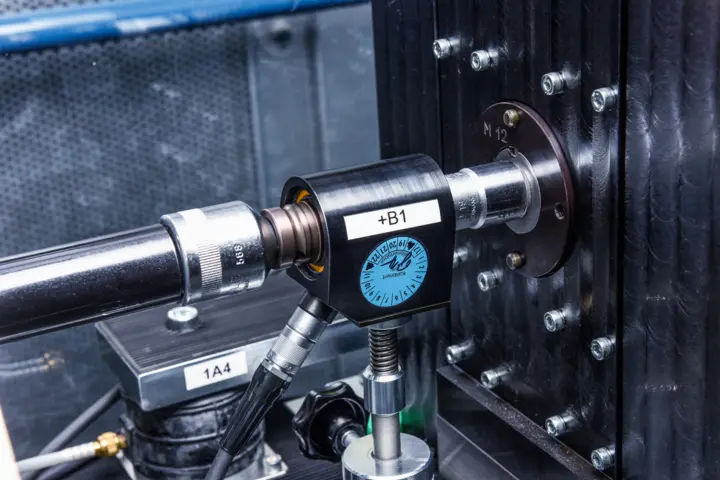Load simulation on the test bench to optimize design
One of the main tasks of the six-strong ZF team is to overcome challenges in the development and design process. For example: a threaded joint on the prototype of a complex component such as a truck transmission might fail to withstand the dynamic loads, although the reason is not clear at first glance. In cases such as this, the team's expertise is needed to identify alternatives in a development process that has already reached an advanced stage. 'The quality of a threaded joint depends on multiple factors. Is the component at fault – or the tool? Could there be any lubricant residues that are compromising the joint? Was the force applied to tighten the joint too high, or too low? On the fastener test bench, we simulate the different influencing parameters to discover exactly where the causes of the problem lie,' Hornikel explains.
As he mainly provides services for inhouse ZF customers, Hornikel usually has to work as quickly as possible to come up with sound solutions for problematic threaded joints. The final stage in the process is often a new set of assembly instructions. Lately, however, designers are increasingly turning to Hornikel during the development process so they can collaborate to find a solution. 'That's considerably more efficient, of course, because then you can influence important decisions that have to be taken in advance – about where a bolt or screw has to be positioned, for instance. There are major advantages to doing this ahead of time rather than later – which would be like closing the stable door after the horse has bolted. So that's why our approach to advice is increasingly proactive,' Hornikel sums up.
As an expert on fastening technology, he also attends specialist trade fairs to learn about the cur-rent state-of-the-art and see the latest innovations and developments for himself. He first became aware of Kistler's new test system at the Motek in 2015. 'In any case, we wanted to expand our capacity, so we were looking around for a new test bench. I was particularly attracted by the concept of one single device that combines three functions: fastener inspection, determination of friction coefficients, and vibration testing. As far as I'm aware, this is unique on the market,' Hornikel emphasizes. He was finally won over to the Analyse system in November 2016, when he was invited by Kistler to learn about this product in greater detail; and on his way to the Kistler Center, he discovered that one of ZF's major fastener suppliers is also using a virtually identical Kistler Analyse system.
Flexible fastener, friction coefficient and vibration testing in one system
Jürgen Wahl, a sales engineer specializing in fastener technology at Kistler, provided support for this project from day one. He explains some further improvements that have been implemented in this innovative test bench: 'Unlike conventional stands for the Junker test, our vibration test bench is largely controlled by software. The advantage is that it requires far less effort to set up and use. Parameters such as amplitude and frequency can even be modified while the test is running.'
ZF purchased the Kistler Analyse system before the end of 2017, and it has been operating successfully ever since it was commissioned in February 2018. 'This new test bench relieves pressure on the old system, which is now somewhat outmoded. And it also gives us many more options for testing threaded joints with safety elements, because it's simple to operate and very flexible thanks to software control. The integrated vibration unit is a major advantage in this regard. The result: we can offer better advice to our internal customers and give them more efficient support when they are faced with challenges,' Hornikel notes. Wahl adds: 'The staff at ZF already had some practical knowledge of the basic structure of the programming software used on the test bench. Of course, that makes training and practical application much easier.' The key question is: what preloading force is needed? And in the future, this question can be answered faster and more reliably – especially under dynamic conditions such as those present in rail and road vehicles as well as aircraft and watercraft.
About six years ago, Hornikel set up the 'Bolt Connection' working group at ZF to give participants more insights into the complexities of fastener testing. Representatives from all parts of the company attend this group to learn about the latest developments and exchange their experiences. Thanks to Kistler's cutting-edge Analyse system, Hornikel can offer a new type of service to his colleagues from local R&D departments this year, with designs for threaded joints that no other provider can currently offer in this form – so ZF's central Competence Center is fully able to handle the varied range of requirements that it must meet.






![Load tests on threaded joints [object Object]](https://kistler.cdn.celum.cloud/SAPCommerce_Document_Preview/961-169e.webp)